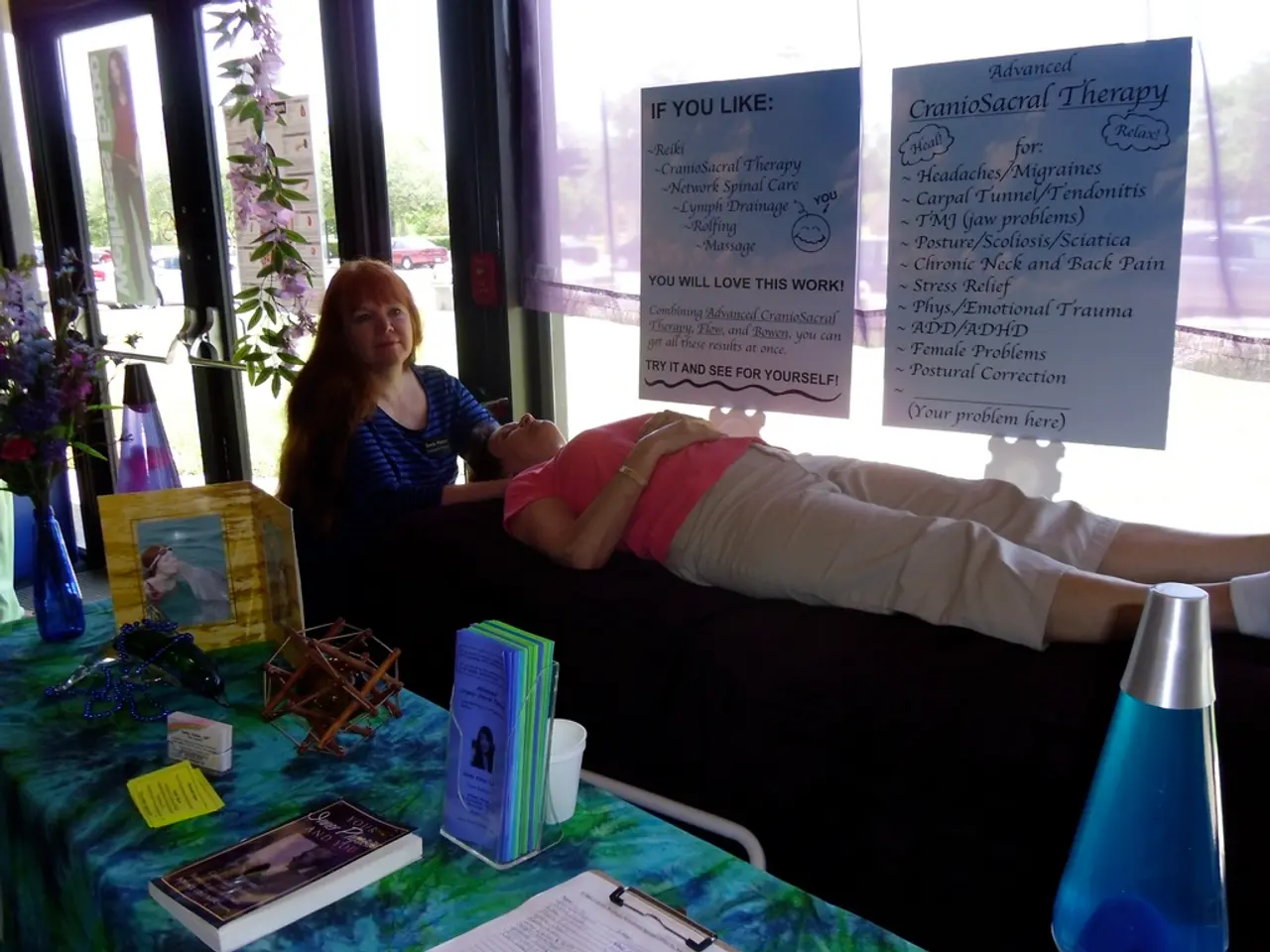Connected Issue: Fibroids and spine discomfort?
In the realm of women's health, uterine fibroids are a common occurrence, affecting a significant number of individuals. These noncancerous growths can develop in or around the uterus and, while often asymptomatic, can lead to a variety of symptoms depending on their location and size.
One symptom that has been associated with certain types of fibroids is back pain. A study published in 2017 reported that as many as 60% of people with uterine fibroids experienced lower back pain [1].
So, what is the link between uterine fibroids and back pain?
Fibroids located on the back (posterior) surface of the uterus, such as subserosal fibroids, are more likely to press on surrounding structures and cause lower back pain. Large fibroids, especially those exerting pressure on nerves or muscles in the pelvic and lower back area, can cause discomfort or pain in the back. Intramural fibroids, while causing moderate pelvic pain, are less specifically associated with back pain than posterior subserosal types [2][4].
Here's a breakdown of the different types of fibroids and their likelihood to cause back pain:
- Intramural fibroids: These grow within the muscular wall of the uterus and are the most common type. While they can cause pelvic pain or a sensation of pressure, they are less likely to cause back pain.
- Submucosal fibroids: These develop just under the lining of the uterine cavity and may protrude into the uterine cavity. They are less likely to cause back pain, but can contribute to fertility issues and heavy bleeding.
- Subserosal fibroids: These grow outward from the outer surface of the uterus. If located on the posterior surface of the uterus, they have a higher likelihood of causing back pain.
- Pedunculated fibroids: These can grow on a stalk either inside or outside the uterus. If large and pressing on adjacent structures, they can cause pain, but are not specifically associated with back pain.
In summary, back pain is most commonly related to subserosal fibroids growing on the uterus's back side. Other fibroid types cause symptoms more related to bleeding, pelvic pressure, or urinary/rectal issues depending on their location.
If you are experiencing back pain and suspect it might be related to uterine fibroids, it's essential to consult with a healthcare professional. They can help determine the cause and suggest appropriate treatment options. In some cases, doctors may prescribe low dose birth control pills to help with heavy bleeding and potentially stop fibroids from growing. More invasive procedures like myomectomy, hysterectomy, myolysis, and uterine artery embolization may also be considered depending on the individual's circumstances and desired fertility plans.
[1] American College of Obstetricians and Gynecologists. (2019). Uterine Fibroids: A Comprehensive Guide for Women and Their Healthcare Providers. Washington, DC: ACOG. [2] National Institute of Diabetes and Digestive and Kidney Diseases. (2021). Uterine Fibroids. Retrieved from https://www.niddk.nih.gov/health-information/women/conditions/uterine-fibroids [4] Mayo Clinic. (2021). Uterine fibroids: Symptoms and causes. Retrieved from https://www.mayoclinic.org/diseases-conditions/uterine-fibroids/symptoms-causes/syc-20354930
- Uterine fibroids, a common medical condition in women's health, can potentially lead to chronic diseases, with back pain being one of the symptoms associated with certain types.
- In the realm of health and wellness, it is crucial for women to understand that subserosal fibroids, particularly those located on the backside of the uterus, are more likely to cause back pain due to their propensity to press on surrounding structures.
- Pursuing a fitness and exercise routine can aid in improving overall health, but it is essential for women to be aware that back pain might be a symptom of uterine fibroids and to consult medical professionals when experiencing such discomfort.
- The science behind uterine fibroids and their impact on women's health has revealed that factors such as fibroid size and location can significantly influence the types of symptoms associated with them, including chronic conditions like back pain.




